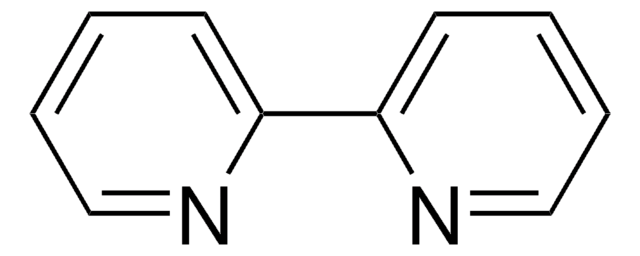200085
Mercury(II) bromide
ACS reagent
Sinónimos:
Mercuric bromide
About This Item
Productos recomendados
grade
ACS reagent
Quality Level
vapor pressure
1 mmHg ( 136.5 °C)
form
powder
reaction suitability
reagent type: catalyst
core: mercury
impurities
≤0.05% insol. CH3OH
reduction residue
≤0.02%
color
white to very faintly yellow
bp
322 °C (lit.)
mp
236 °C (lit.)
anion traces
chloride (Cl-): ≤0.25%
SMILES string
Br[Hg]Br
InChI
1S/2BrH.Hg/h2*1H;/q;;+2/p-2
InChI key
NGYIMTKLQULBOO-UHFFFAOYSA-L
¿Está buscando productos similares? Visita Guía de comparación de productos
General description
Application
signalword
Danger
Hazard Classifications
Acute Tox. 1 Dermal - Acute Tox. 1 Inhalation - Acute Tox. 2 Oral - Aquatic Acute 1 - Aquatic Chronic 1 - STOT RE 2
Storage Class
6.1A - Combustible acute toxic Cat. 1 and 2 / very toxic hazardous materials
wgk_germany
WGK 3
flash_point_f
Not applicable
flash_point_c
Not applicable
Elija entre una de las versiones más recientes:
¿Ya tiene este producto?
Encuentre la documentación para los productos que ha comprado recientemente en la Biblioteca de documentos.
Nuestro equipo de científicos tiene experiencia en todas las áreas de investigación: Ciencias de la vida, Ciencia de los materiales, Síntesis química, Cromatografía, Analítica y muchas otras.
Póngase en contacto con el Servicio técnico










